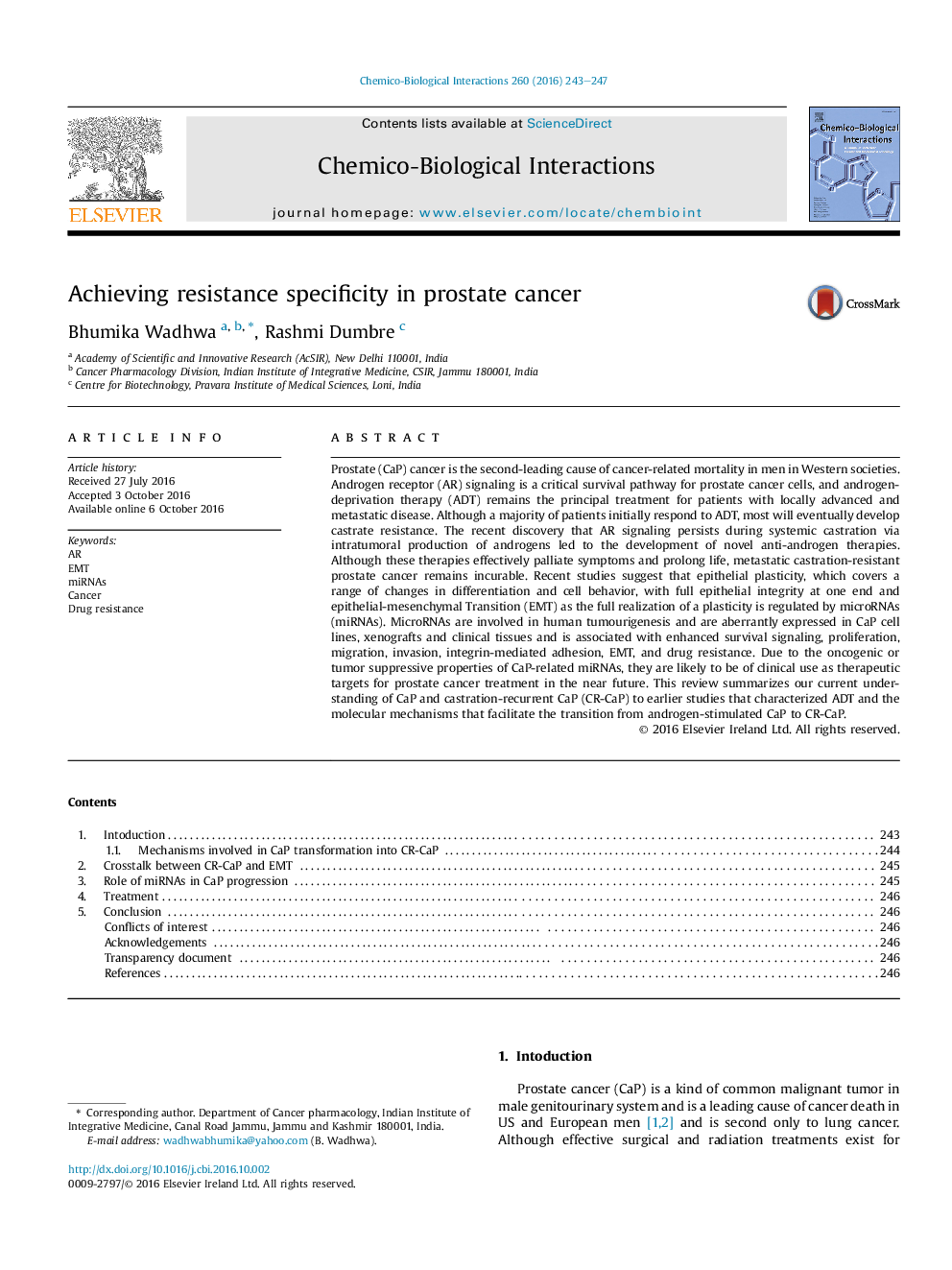| کد مقاله | کد نشریه | سال انتشار | مقاله انگلیسی | نسخه تمام متن |
|---|---|---|---|---|
| 5559389 | 1561582 | 2016 | 5 صفحه PDF | دانلود رایگان |
- Hyperactivation of AR signaling regulates various cellular events involved in cancer.
- The functional role of CR-CaP has been lately shown to be non-redundant.
- CR-CaP differentially regulates EMT and cancer progression.
Prostate (CaP) cancer is the second-leading cause of cancer-related mortality in men in Western societies. Androgen receptor (AR) signaling is a critical survival pathway for prostate cancer cells, and androgen-deprivation therapy (ADT) remains the principal treatment for patients with locally advanced and metastatic disease. Although a majority of patients initially respond to ADT, most will eventually develop castrate resistance. The recent discovery that AR signaling persists during systemic castration via intratumoral production of androgens led to the development of novel anti-androgen therapies. Although these therapies effectively palliate symptoms and prolong life, metastatic castration-resistant prostate cancer remains incurable. Recent studies suggest that epithelial plasticity, which covers a range of changes in differentiation and cell behavior, with full epithelial integrity at one end and epithelial-mesenchymal Transition (EMT) as the full realization of a plasticity is regulated by microRNAs (miRNAs). MicroRNAs are involved in human tumourigenesis and are aberrantly expressed in CaP cell lines, xenografts and clinical tissues and is associated with enhanced survival signaling, proliferation, migration, invasion, integrin-mediated adhesion, EMT, and drug resistance. Due to the oncogenic or tumor suppressive properties of CaP-related miRNAs, they are likely to be of clinical use as therapeutic targets for prostate cancer treatment in the near future. This review summarizes our current understanding of CaP and castration-recurrent CaP (CR-CaP) to earlier studies that characterized ADT and the molecular mechanisms that facilitate the transition from androgen-stimulated CaP to CR-CaP.
Journal: Chemico-Biological Interactions - Volume 260, 25 December 2016, Pages 243-247
